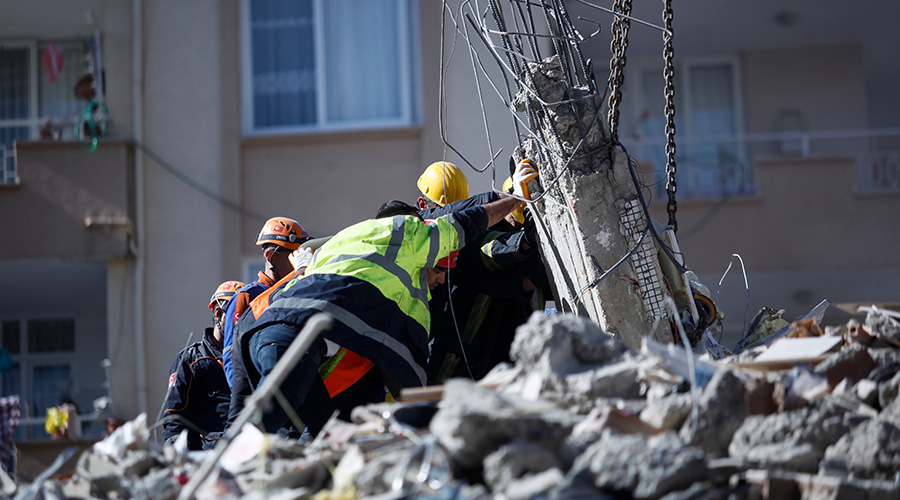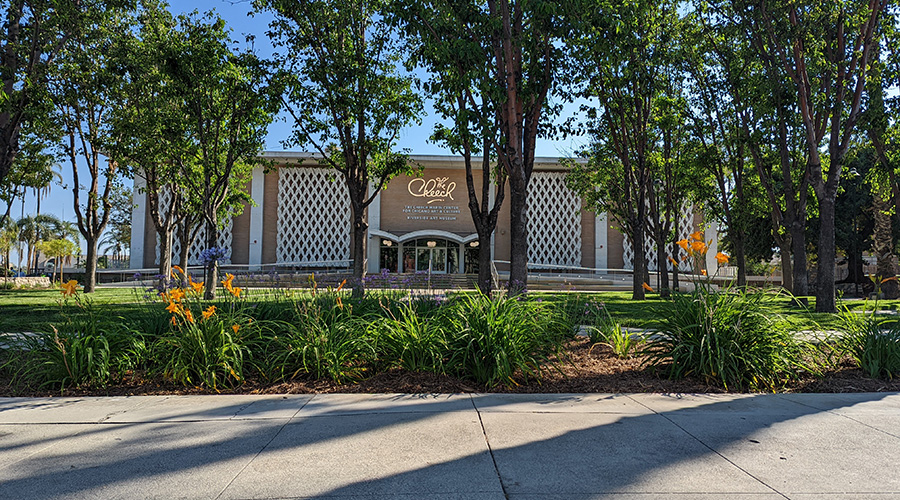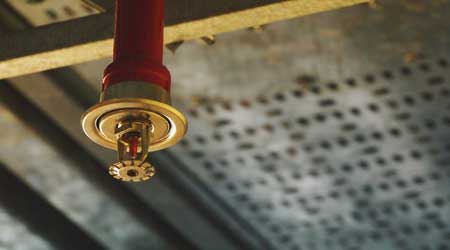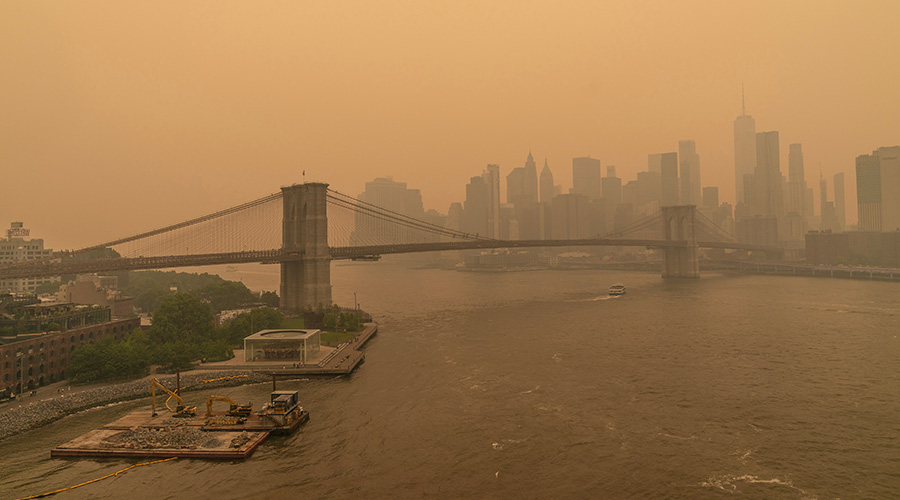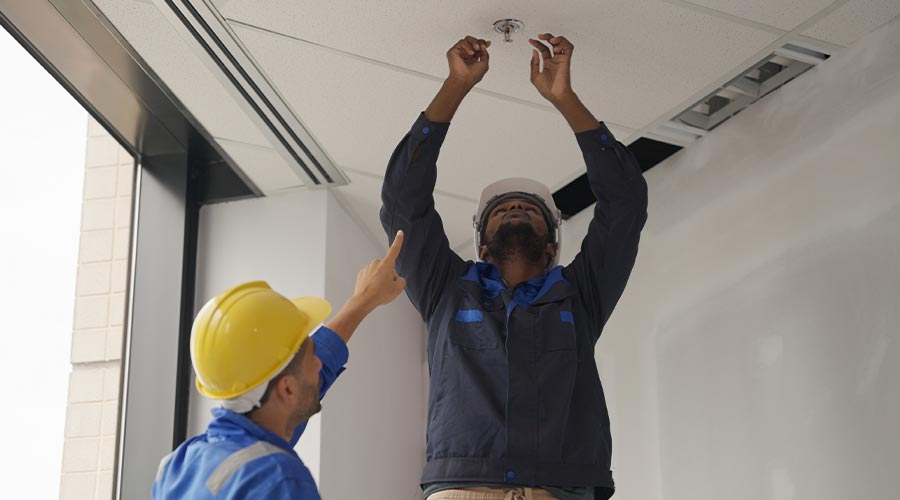The Hidden Threat of Corrosion in Water-Based Fire Sprinkler Systems
Past iterations of code have implications for corrosion, which develops in different ways in different systems.
Corrosion-related issues with water-based suppression systems are not a new problem. As time progresses so does corrosion of metal exposed to oxygen. Yet corrosion of water-based fire protection systems goes unnoticed because it is concealed from view.
Once corrosion reaches a critical level, however, it can cause costly failures, water damage, and underperformance of systems when they are needed. Lack of required inspections, which would otherwise inform building owners and delegated maintenance personnel of corrosion problems, becomes a focal point when systems fail during a fire event or water loss. Here are some of the critical aspects to consider to maintain optimal water-based suppression systems.
Design impact on corrosion
Development of corrosion differs based on the type of system, and is influenced by design decisions. Veering from code can have significant implications.
NFPA 25 Standard for Inspection, Testing, and Maintenance of Water-Based Fire Protection Systems is the industry reference document about corrosion issues with such systems. The document provides specific tasks such as making simple visual observations of the exterior of components as well as in-depth internal observations to inspect for corrosion. The document also provides time intervals for the tasks to be performed. The first edition of NFPA 25 had an effective date of Feb. 10, 1992. The document is the continuation of other documents such as NFPA 13A Recommended Practice for the Inspection, Testing, and Maintenance of Sprinkler Systems and NFPA 14A Recommended Practice for the Inspection, Testing, and Maintenance of Standpipe and Hose Systems, but NFPA 25 includes much more information about the care of water-based systems.
The first edition of NFPA 13A is dated 1940 and includes language regarding flushing out parts of systems or entire systems if necessary. The document mentions maintaining dry-pipe systems free of water throughout the year to reduce the amount of corrosion and formation of sediment within the systems. Also, an internal inspection of piping should be made if the age or service conditions warrant. This first Standard of Care edition coincides with the standardization of the pipe schedule method for sizing system piping and required 1-inch diameter pipe as the minimum size allowed. Older non-standardized pipe schedule methods included 3/4-inch diameter piping, and 1/2-inch diameter pipe has also been utilized. These smaller pipe sizes are very susceptible to being obstructed by pipe scale or other forms of corrosion.
Effects of system type
Dry-pipe and pre-action systems, which are normally pressurized with air, are the most common types of systems to exhibit corrosion. Dry type and pre-action systems utilizing galvanized pipe that have trapped water are known to deteriorate and are no longer viewed as having superior hydraulic characteristics. Sections of piping that are not adequately pitched to completely drain water contained in the system are subject to corrode faster than if the system were completely void of water. The system has to be filled with water when installed to perform the required hydrostatic pressure test for integrity purposes, and every three years the system must undergo a full trip test to document the water delivery time to ensure the system can deliver water to the remote sprinkler as it did when first accepted.
Water-trapped sections of dry type systems will corrode at the air-water interface. To adequately pitch the pipe to drain every drop of water is not realistic in most buildings. This ideal configuration is only likely within a building such as a warehouse with steep sloping ceilings and free rein to install the supply pipe to the ceiling system. In addition to pipe pitch, the appropriate types of fittings, gaskets, pipe fabrication, and piping free of imperfections, must be used.
Pre-action systems are prone to corrosion as they are sophisticated versions of dry-pipe systems. Pre-action systems contain pressurized air but require one or more additional actions such as the activation of a smoke detector to allow water into the system.
One older installation practice allowed by NFPA 13 can make a substantial difference with regards to corrosion. The older editions allowed piping to be installed without pitch if the system were installed in a conditioned environment such as a computer room or data center. These pre-action systems were typically constructed with galvanized light wall pipe (schedule 10 or less) which have experienced corrosion and leaks.
Also, the type and quality of the air supplied to pressurize the system plays a role in determining the effects of corrosion. If there are leaks in the system, which is common, atmospheric air is replenished more frequently by means of a typical air compressor adding oxygen and likely unwanted moisture in the system piping, and increasing the rate of corrosion.
Wet pipe systems are also subject to corrosion. Corrosion occurs at air/water interface locations such as in high points of piping configurations where air is trapped in the system. Draining and filling a wet pipe system introduces oxygen which corrodes the piping. Operating an inspector’s test valve introduces oxygen. Inspector’s test valves on older wet pipe systems were typically installed at the remote sprinkler typical to a dry-pipe system, which introduces more oxygen than if the inspector's test valve were located in the vicinity of the alarm device as allowed by recent editions of NFPA 13 Standard for the Installation of Sprinkler Systems.
Corrosion vulnerability in system components
Certain individual components of the fire-protection system are susceptible to corrosion. Facility managers need to keep in mind the following:
• Fire department connections. Fire pump tests allow oxygen to enter the piping in the vicinity of the fire pump when water is discharged and replenished. In addition, piping to fire department connections should be checked for corrosion. Corrosion is often observed at the building exterior wall interface. These components of the system are rarely utilized or tested for integrity. The piping is required to be hydrostatically tested per NFPA 13 when installed, and then periodically tested per NFPA 25. The components are critical for use if a fire occurs.
• Sprinklers. Dry pendant sprinklers are subject to corrosion. These types of sprinklers are installed to protect exterior locations, freezers, coolers, and spaces below unconditioned attics. Dry pendant sprinklers are commonly installed where environmental conditions cause moisture to condense on the components, resulting in corrosion.
• Cast iron pipe. Unlined cast iron underground piping used to supply sprinkler systems in older buildings is very susceptible to corrosion, but is typically not considered during internal pipe inspections. The friction loss associated with this type of pipe is also typically not adequately considered when performing hydraulic calculations for replacement sprinkler systems during renovations. These types of supply mains have been found to be obstructed by 50 percent due to corrosion. Conducting a water flow test upstream of the supply line connection for hydraulic calculations does not address this concern.
• Galvanized pipe. Galvanized pipe was the preferred type of pipe used in dry-pipe systems as, in the past, NFPA 13 allowed it to have a corresponding C factor of 120 for calculation purposes whereas a C factor of 100 would be required for black steel pipe. C factor indicates the smoothness of the interior of a pipe. The higher C factor of 120 resulted in reduced pipe sizes; therefore, less water was contained in the system and improved water delivery time would be expected. These parameters offset the increased cost for galvanized pipe compared to black steel pipe (smaller diameter valves, piping and fittings, less labor, and possible deletion of accelerators). This appears to be good news; however, if the pipe is not adequately pitched and specific gaskets are not used, water/oxygen interfaces can occur, causing the interior of galvanized piping to corrode more rapidly than if black steel pipe were used. The corrosion adversely affects the benefits of the intended C factor expected with galvanized pipe and the flaking-off of the galvanized coating can end up obstructing sprinkler waterways. NFPA 13 has since revised the C factor allowance of 120 to 100, the same as black steel pipe, so there is no longer a cost savings benefit to the end user or installing contractor.
Corrosion mitigation strategies
There are means available to mitigate corrosion in new and existing, wet and dry-type water-based fire protection systems. These mitigation strategies should be analyzed by a qualified professional who can help the facility manager make the best investment decision.
Numerous manufacturers offer nitrogen systems in place of the traditional air compressor utilized for the past approximately 100 years for dry-pipe systems. Not surprisingly, these nitrogen systems are more expensive, and for good reason. Systems supplied and maintained with an adequate concentration of nitrogen gas have shown favorable results with regards to mitigating corrosion. These inert gas systems can extend the life of systems and reduce repair work and damage associated with corrosion. However, nitrogen systems require periodic maintenance to be of continued benefit.
There are air compressors available with associated desiccant dryers which are more expensive than the traditional air compressor but less than the nitrogen systems on the market. These systems also require periodic maintenance to be of continued benefit.
Some manufacturing plants have their own compressed air systems to perform work tasks. These plant air systems can be utilized for sprinkler system air if the appropriate associated air regulating equipment is provided. Plant air systems may contain desiccant dryers or may be nitrogen type which could be suitable for the application.
Choosing the air supply best suited for the application depends on various factors such as the size of the sprinkler system, the value or importance of items or building being protected, the location, etc.
There are means to mitigate corrosion in existing systems; however, a complete replacement may be warranted if damage has left the system beyond salvaging. The existing system installation should first be analyzed by a qualified professional to determine the options available. The analysis should include the quality of workmanship and configuration of the existing installation, fabrication methods, a determination of whether the existing design is adequate for the hazard, the life expectancy of the system, and the cost associated with the mitigation strategy.
Corrosion mitigation methods should be considered for proposed system installations, especially dry-pipe or pre-action types where moist air can be introduced into the piping. Strategies can consist of more than just choosing the type of materials or equipment advertised to solve a generic problem. The design, fabrication, installation and experienced oversight of new installations or modifications to existing systems should be included in the cost-benefit analysis.
Steven Dellasanta, a senior consultant for Jensen Hughes, has 33 years of experience with water-based fire protection systems including installation, design and testing.
System age is not the main factor in corrosion
The age of systems does not matter in all cases, in respect to corrosion. Example A shows the end of a cross main at the lowest level of an educational building where a 2-inch flushing cap was removed. The approximate age of the system installation is 50 years old. The pipe is schedule 40 black steel in very good condition for its age with no signs of obstructions. Example B shows the end of a cross main at the attic level of the same building, where a 3-inch flushing cap was removed. The approximate age of the system installation is believed to be 25 years old. The pipe is schedule 10 black steel. Moisture and loose pipe scale was observed.
Other ways to clog fire sprinkler pipes
Untreated raw water sources such as ponds, rivers, and lakes are used as fire protection water supplies where public water is not available or not available in quantity. If the water is not properly screened and treated, organic growth, debris, and mineral deposits can be introduced into the system, and piping and sprinklers will likely end up being obstructed.
Related Topics:






